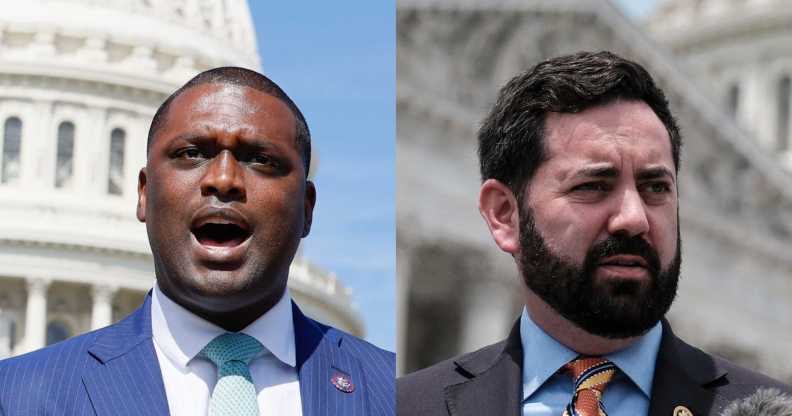New York House districts/ swing districts NYC/ 2024 House control/ suburban voting trends/ Lawler vs. Jones/ Newslooks/ NELSONVILLE, N.Y./ J. Mansour/ Morning Edition/ Suburban and exurban districts surrounding New York City, where Republicans have historically done well but Trump struggled in 2020, are among the most contested House races. Democrats and Republicans are focusing heavily on these battleground districts as they vie for control of the U.S. House in 2024.

Key House Swing Districts in NYC Suburbs Quick Looks
- Geographical Reach: 11 districts from Long Island through Connecticut, Hudson Valley, and northeast Pennsylvania.
- Trump Factor: Many districts lean Republican but showed strong opposition to Trump in 2020.
- Diverse Issues: Voters’ concerns include crime, the economy, and abortion rights, often aligning differently with congressional candidates than with the top of the ticket.
- Key Contests: Republicans like Rep. Mike Lawler and Marc Molinaro seek reelection in close races.
House Control in Play in NYC Suburbans That Leaned Away from Trump
Deep Look
As the 2024 U.S. House races approach, a cluster of battleground districts within a 90-mile ring around New York City could determine which party holds the House majority. Eleven highly contested districts—stretching from the New York City suburbs through Connecticut, the Hudson Valley, northeast Pennsylvania, and parts of New Jersey—are now focal points in a nationwide fight for control of Congress.
These districts have a dual trend that shapes voter dynamics: a history of electing Republicans to Congress while simultaneously rejecting Donald Trump’s presidential bids. In the 2020 election, all but two of these districts supported Joe Biden over Trump. Yet two years later, in the 2022 midterms, Republicans secured seven of these seats as suburban voters voiced their frustrations over crime and economic concerns. Today, both parties recognize that voter sentiments in these districts may once again shift the balance of power.
For Republicans, the strategy centers on candidates like Rep. Mike Lawler of New York’s 17th District. Lawler won his seat in 2022 in an area where Trump trailed Biden by 10 percentage points. In 2024, Lawler faces Democrat Mondaire Jones, a former congressman and one of the first openly gay Black men to serve in the House. Both candidates aim to capture moderate voters, each portraying the other as allied with extremists.
“People are waking up to the fact that even if they don’t think Mike Lawler is as extreme as Marjorie Taylor Greene, they can’t afford to vote for him because of the chaos we’re seeing in Washington,” Jones said, referencing Greene, a conservative firebrand. Lawler, in turn, has accused Democrats of exaggerating his stance on issues like abortion to distract from what he calls failings in economic and border policies. Lawler told the Associated Press, “They’re misrepresenting the facts on issues like abortion because they have nothing else to offer voters.”
This balance of local issues versus national party alignment plays out in similar ways across other nearby districts. For example, Rep. Anthony D’Esposito is campaigning to retain his seat in Long Island’s suburbs, where he’s challenging Democrat Laura Gillen over issues such as immigration and crime. Similarly, northwest of New York City, Democrat Josh Riley is mounting a fresh challenge against incumbent Rep. Marc Molinaro in a district stretching from the Hudson Valley to the Finger Lakes, where Molinaro’s support has endured despite the district’s Democratic leanings.
Throughout these races, candidates from both parties are carefully navigating Trump’s influence. While some Republicans embrace his policies, they often steer clear of his persona. On the Democratic side, candidates emphasize Trump as a divisive figure but focus more on the issues they say matter to local constituents. This was clear at a recent debate in Connecticut’s 5th District, where Democrat Jahana Hayes accused her opponent, former Republican state Sen. George Logan, of downplaying his alignment with Trump, which Logan neither confirmed nor denied.
Further complicating the landscape are new legal challenges for prominent Democrats like New York City Mayor Eric Adams, who was recently indicted on bribery charges. Although Adams is not on the ballot, his indictment could influence perceptions of Democrats in the region, even as Trump himself faces his own legal issues. Ironically, Trump has shown sympathy for Adams, framing his prosecution as politically motivated—an unusual stance given the long-standing Democratic dominance in New York.
As suburban New York voters grapple with these complex issues, the economy remains a major factor in their decisions. “In the 2022 midterms, the conversation on crime made for steep challenges for Democrats,” noted Steve Israel, a former Democratic representative who served as chair of the Democratic Congressional Campaign Committee. In 2024, he believes the top of the ticket may play a decisive role. “In these districts, it becomes a referendum on Donald [Trump],” he said, describing how local candidates’ messaging might shift depending on voters’ sentiments toward the former president.
On Long Island, D’Esposito, for example, has built his campaign around allegations that Democrats are failing on crime and immigration, hoping to sway voters concerned with public safety and border control. In neighboring Pennsylvania, Republican Brian Fitzpatrick faces a tough reelection race as he appeals to moderate constituents with a record of bipartisan legislation. His challenger, Democrat Ashley Ehasz, is focusing on Fitzpatrick’s GOP affiliation and his voting record, which she argues could enable Republican extremism in the House.
The stakes are high, and the outcomes in these districts will likely impact more than just local representation. With the House majority potentially hanging in the balance, these suburban swing districts are positioned to play a crucial role in shaping the next two years of U.S. politics.







